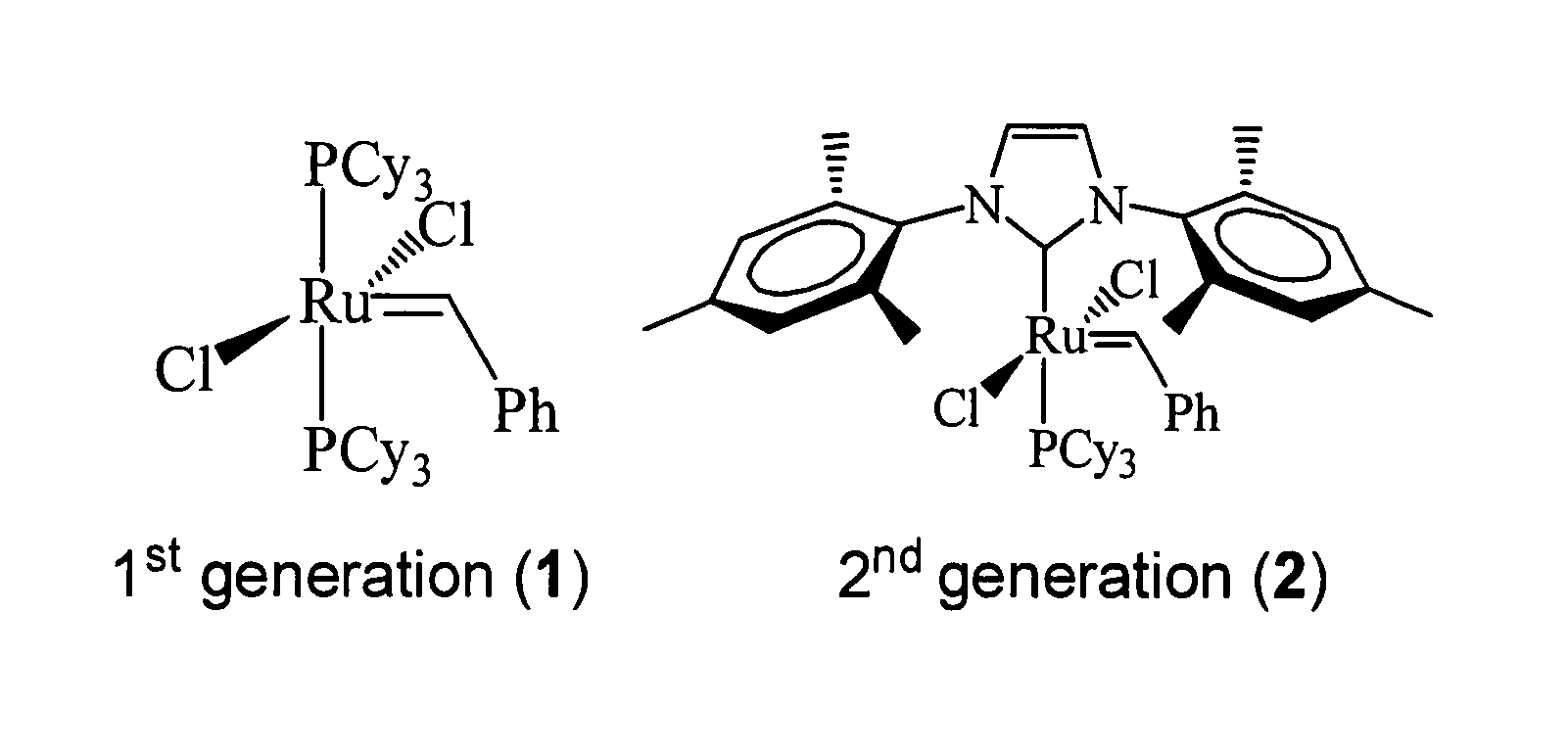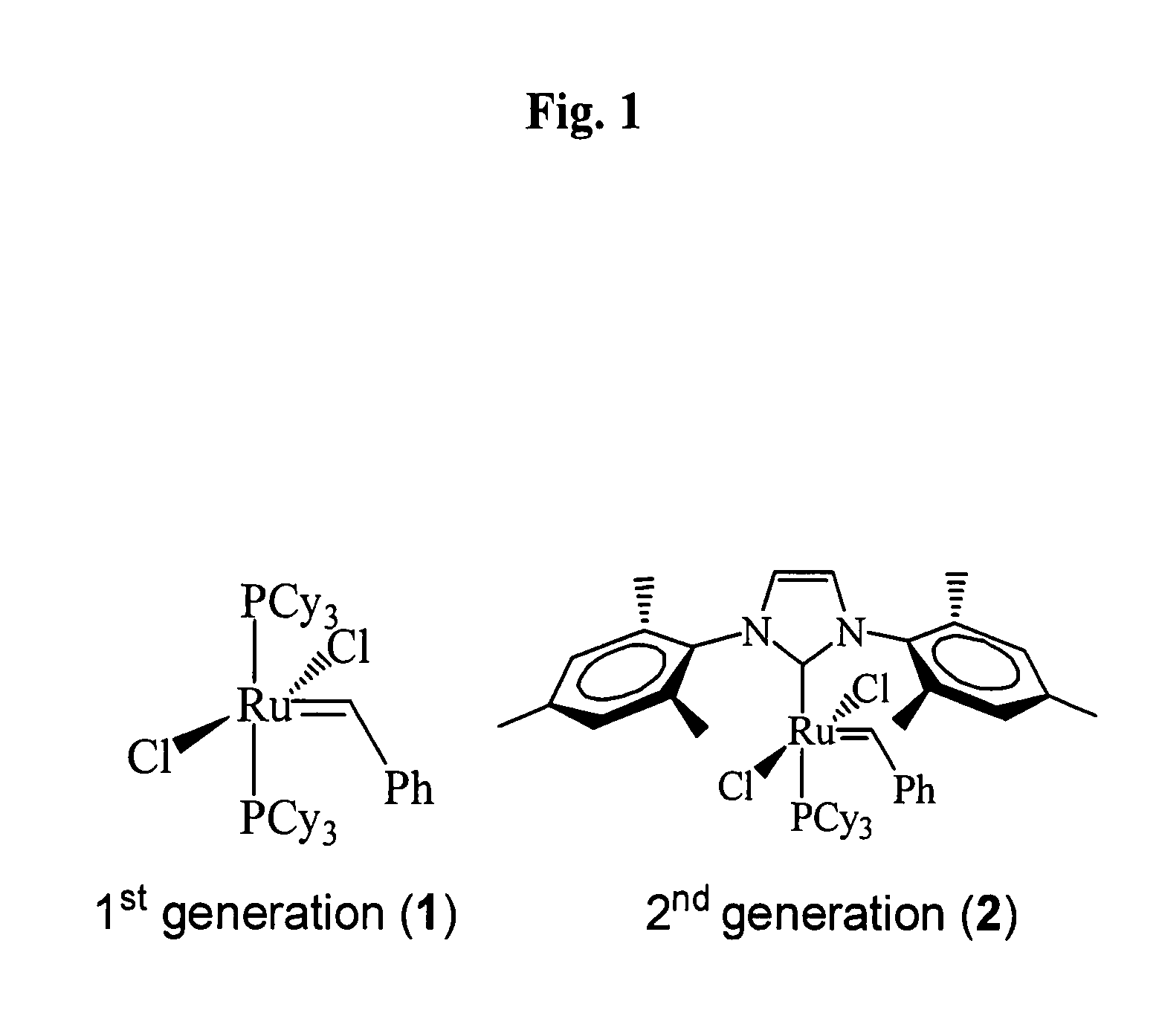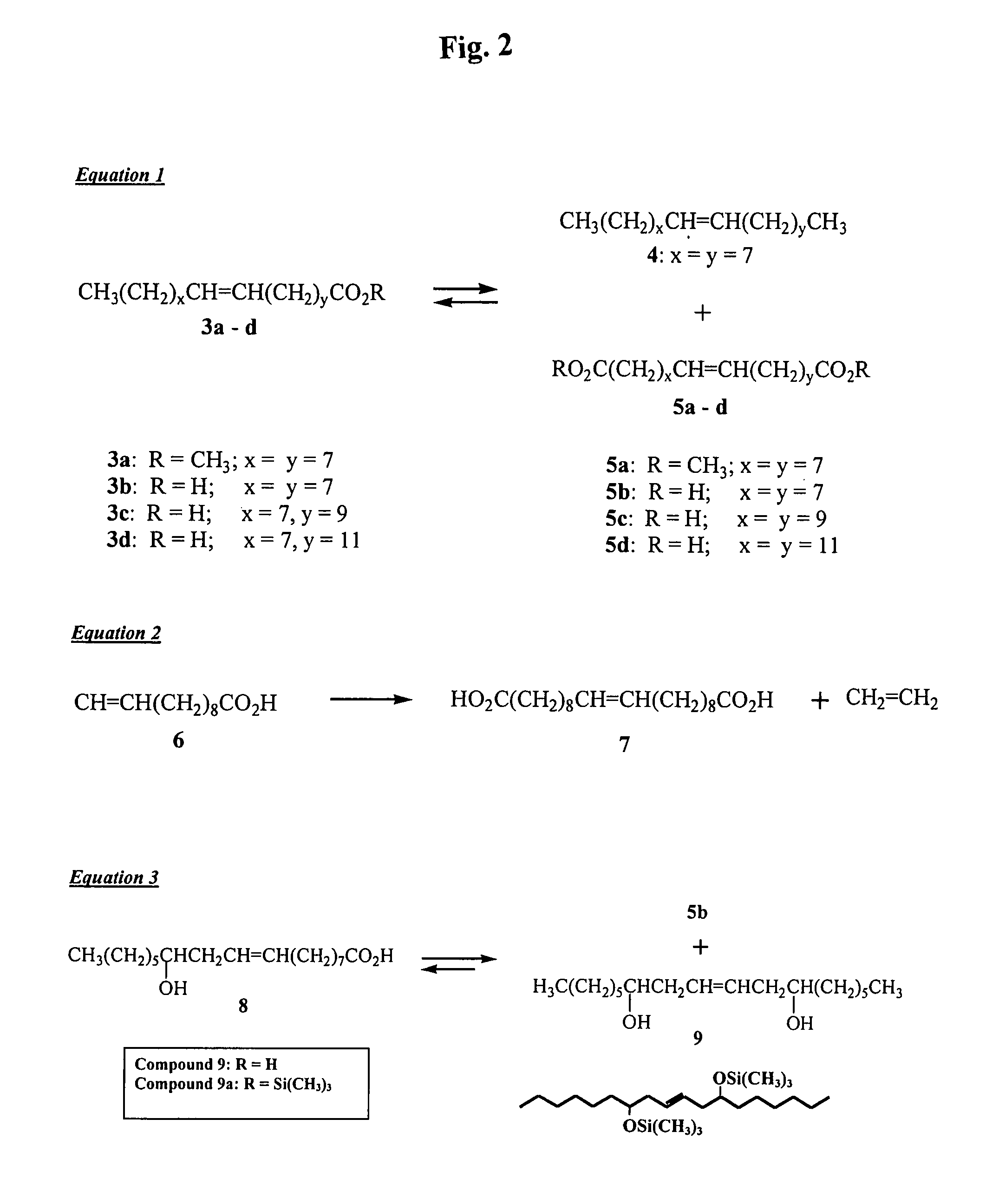Method of producing dicarboxylic acids
a dicarboxylic acid and acid technology, applied in the preparation of carboxylic compounds, organic chemistry, chemistry apparatus and processes, etc., can solve the problems of low conversion rate of monounsaturated fatty acids, low yield of diacids, and low catalyst turnover of catalyst systems
- Summary
- Abstract
- Description
- Claims
- Application Information
AI Technical Summary
Benefits of technology
Problems solved by technology
Method used
Image
Examples
example 1
Materials and Methods
[0034]Oleic acid (99%) and 11-eicosenoic acid (99%) were from NU Chek Prep, Elysian, Minn. Oleic acid (90%), erucic acid (90%), undecenoic acid (98%), and the Grubbs catalysts (1 and 2) were purchased from Aldrich Chemical (Milwaukee, Wis.). All other reagents used were of the highest purity obtainable from commercial suppliers.
[0035]1H and 13C NMR spectra were collected at room temperature in CD3OD either on a Varian Gemini 200-MHz or Varian Inova 400-MHz (Palo Alto, Calif.) spectrometer. Operating parameters for 1H NMR were as follows: cycle time (d1)=1.0 s; acquisition time (at)=3.744 s; transmitter power (tpwr)=57 Hz; pulse width (pw)=90°. Operating parameters for 13C NMR were as follows: cycle time (d1)=2.0 s; acquisition time (at)=2.399 s; transmitter power (tpwr)=52 Hz; pulse width (pw)=45°. GC / MS characterization of products was carried out with a Hewlett Packard (Agilent, Wilmington Del.) HP 5890 instrument with a capillary inlet (splitless mode) and an...
example 2
[0051]The results above led us to further explore the olefin metathesis process using less expensive feedstocks such as vegetable oil- and animal fat-derived fatty acids.
[0052]Soybean oil (refined, bleached, deodorized) was a gift from Archer Daniels Midland (ADM, Decatur, Ill.). Canola oil (rapeseed) was from Archer Daniels Midland Co., ADM (Decatur, Ill.). Tall oil fatty acid was from Arizona Chemical (Jacksonville, Fla.). Linseed oil and bis-(2,4,6-trimethylphenyl)-2-(imidazolidinylidene)(dichlorophenylmethylene)-(tricyclohexylphosphine) [RuCl2(═CHPh)(H2IMes)(PCy3)] 2, a 2nd generation Grubbs catalyst, used in this study were from Aldrich Chemical (Milwaukee, Wis.). All other reagents used were of the highest purity obtainable from commercial suppliers.
[0053]The vegetable oils were hydrolyzed to their free fatty acids (FFA) using 1 M KOH in ethanol:water (95:5) (Christie, W. W., Lipid analysis: Isolation, Separation, Identification, and Structural Analysis of Lipids, Oxford, N.Y....
PUM
| Property | Measurement | Unit |
|---|---|---|
| temperature | aaaaa | aaaaa |
| temperature | aaaaa | aaaaa |
| temperature | aaaaa | aaaaa |
Abstract
Description
Claims
Application Information
 Login to View More
Login to View More - R&D
- Intellectual Property
- Life Sciences
- Materials
- Tech Scout
- Unparalleled Data Quality
- Higher Quality Content
- 60% Fewer Hallucinations
Browse by: Latest US Patents, China's latest patents, Technical Efficacy Thesaurus, Application Domain, Technology Topic, Popular Technical Reports.
© 2025 PatSnap. All rights reserved.Legal|Privacy policy|Modern Slavery Act Transparency Statement|Sitemap|About US| Contact US: help@patsnap.com



